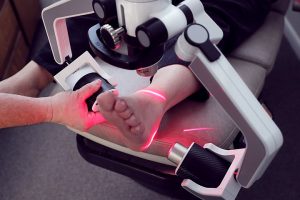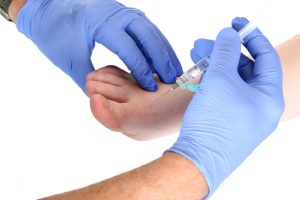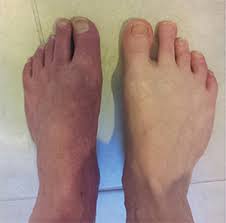
Photobiomodulation therapy (PBMT), also known as low-level laser therapy or cold laser therapy, is a non-invasive treatment that uses low-level lasers or light-emitting diodes (LEDs) to stimulate cellular processes in the body. It has been shown to be effective in reducing pain and inflammation, promoting tissue healing and regeneration, and improving circulation.
PBMT has been used to treat various foot conditions, including plantar fasciitis, Achilles tendinopathy, diabetic neuropathy, and osteoarthritis. The therapy involves shining a specific wavelength of light onto the affected area, which stimulates the production of ATP (cellular energy) and other cellular processes that promote healing and pain relief.
Studies have shown that PBMT can be an effective treatment for foot pain, particularly in cases of plantar fasciitis and diabetic neuropathy. It is a non-invasive and low-risk therapy, with few side effects reported. However, it is important to note that PBMT is not suitable for everyone and should only be performed by a trained professional. It is also important to discuss the potential benefits and risks with your healthcare provider before starting any new treatment.


